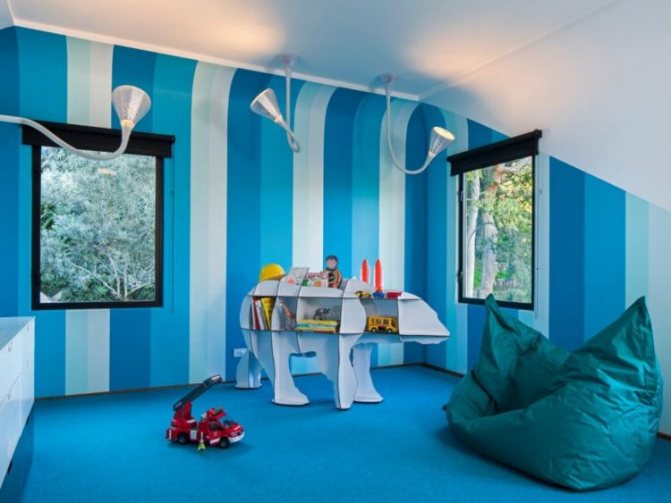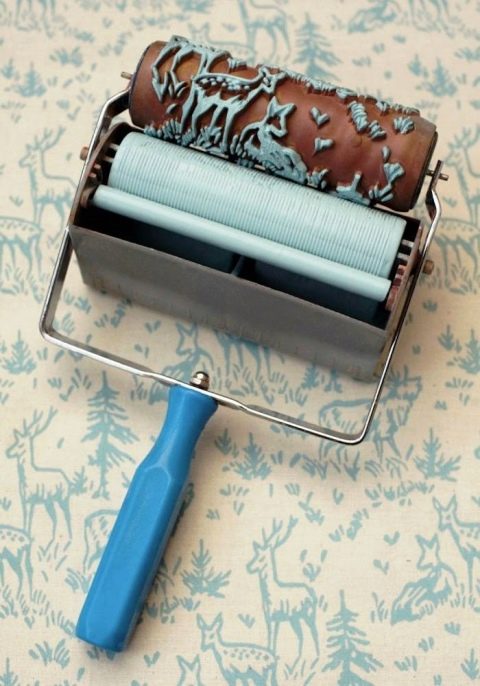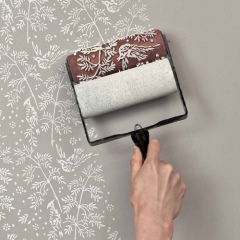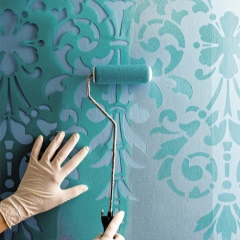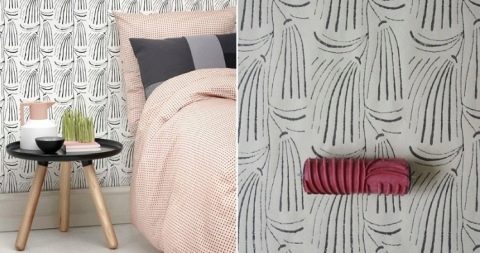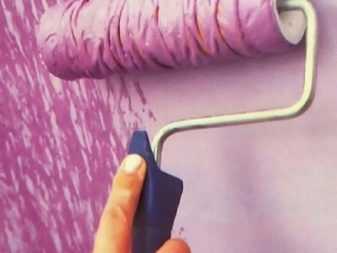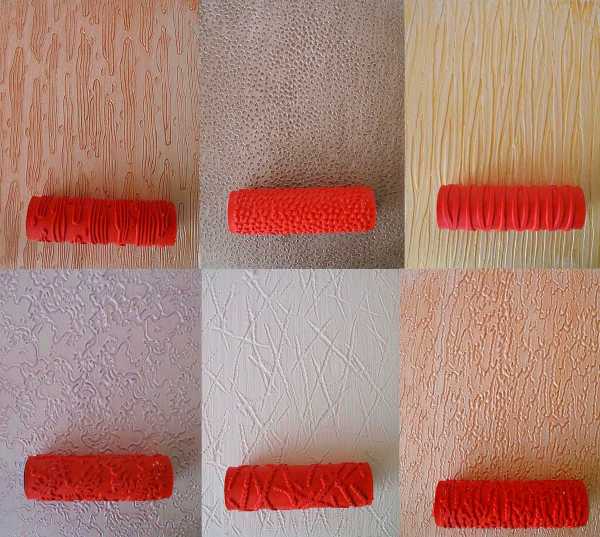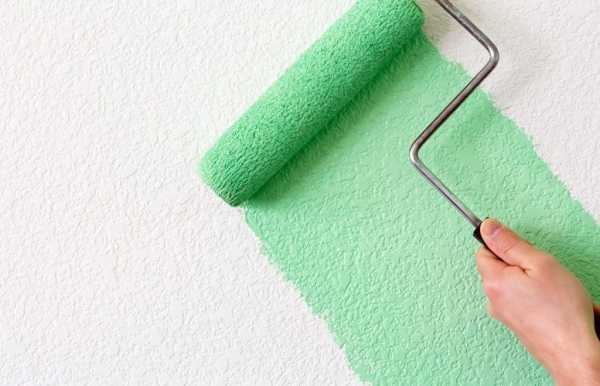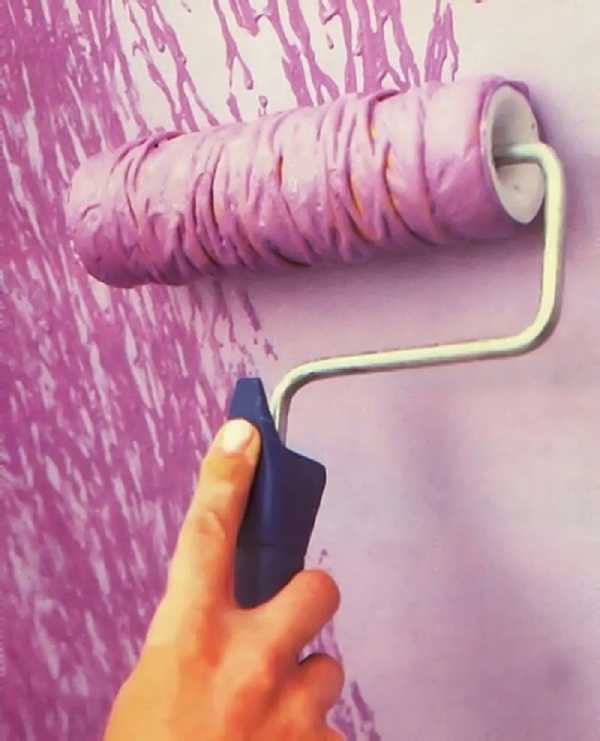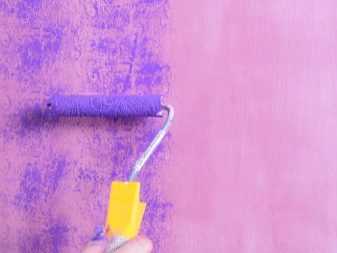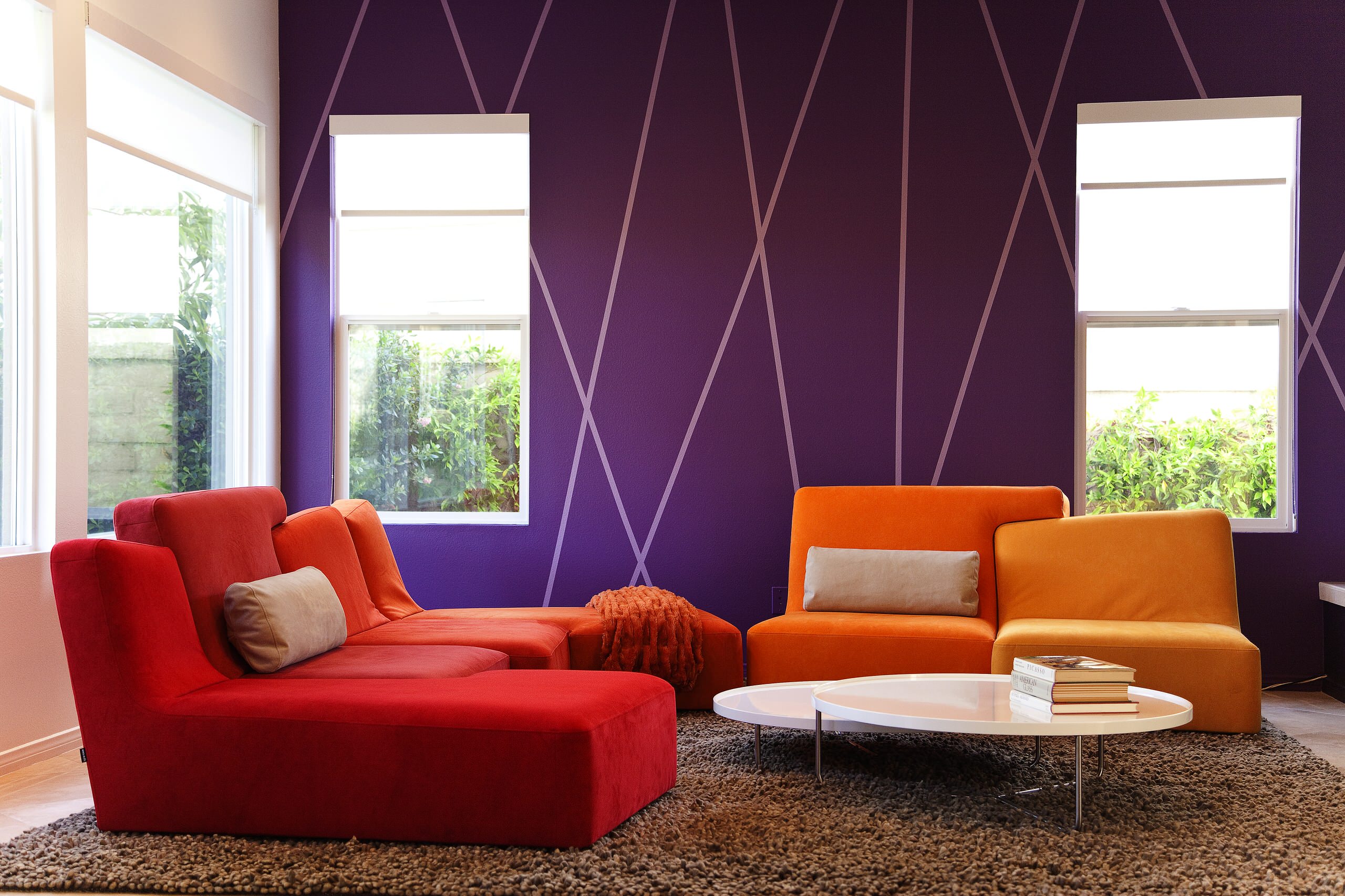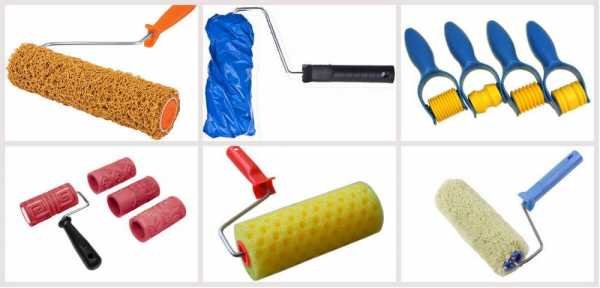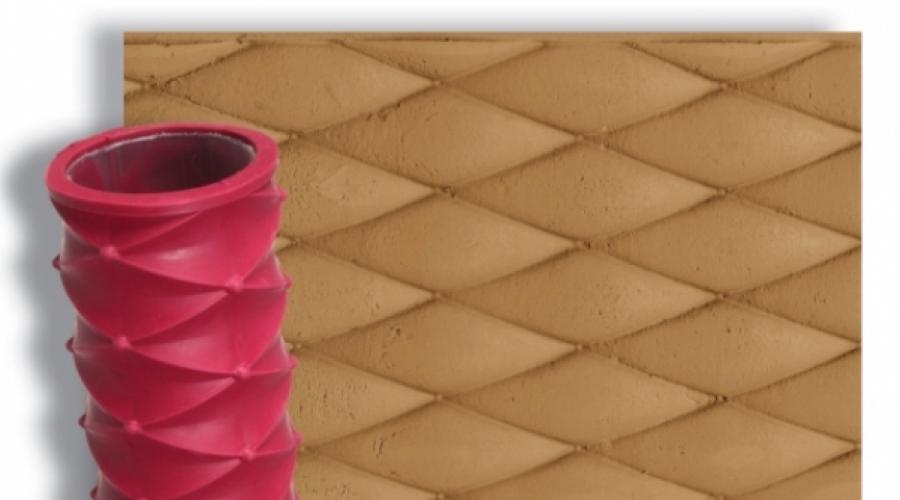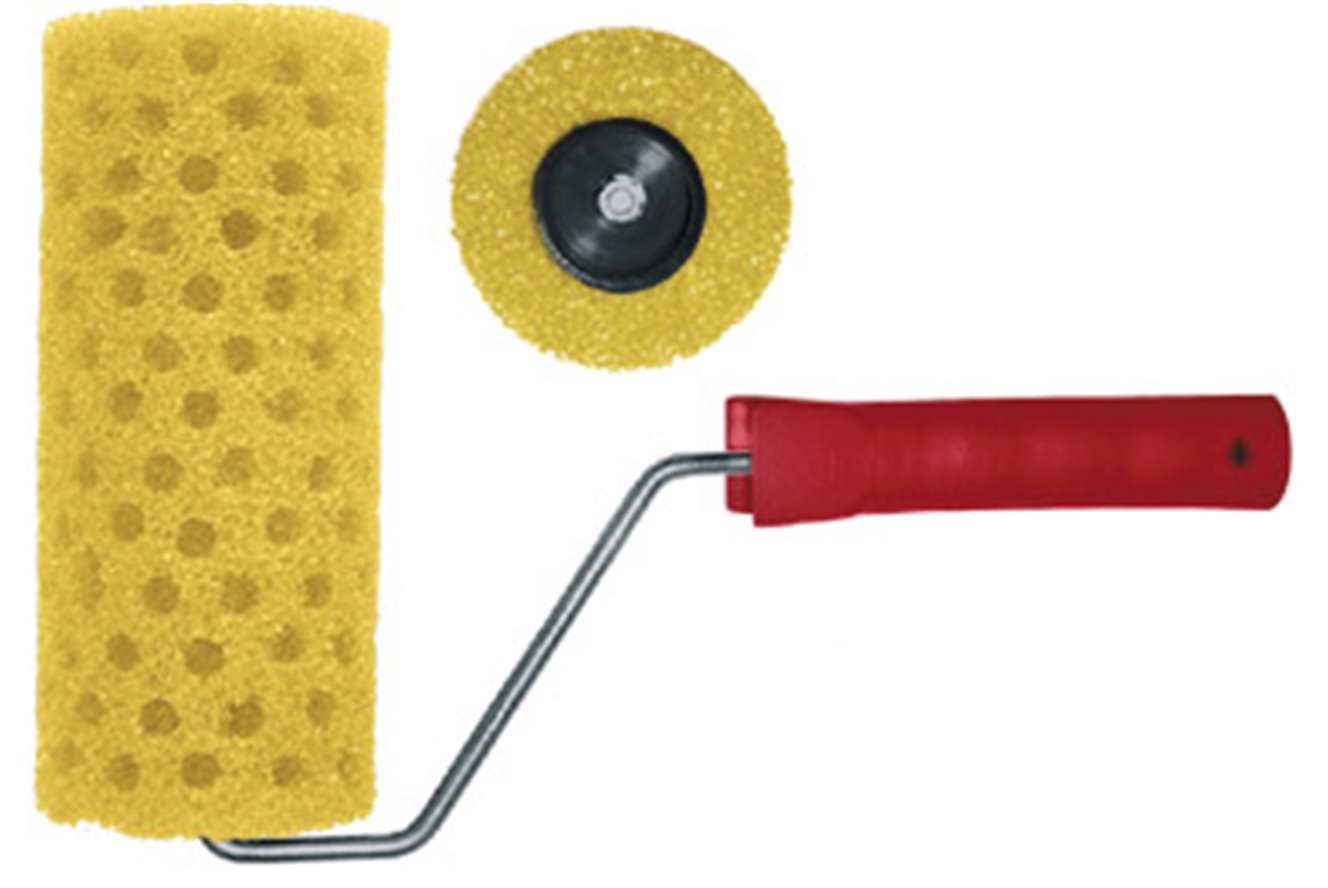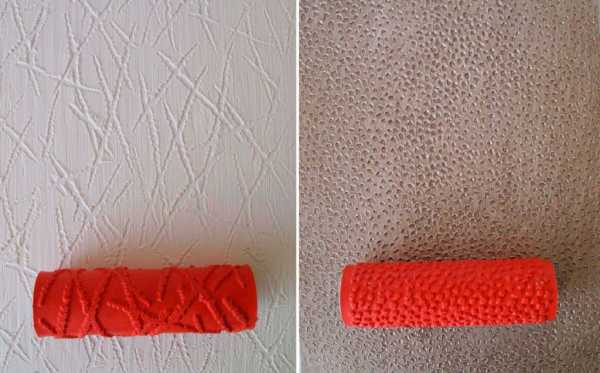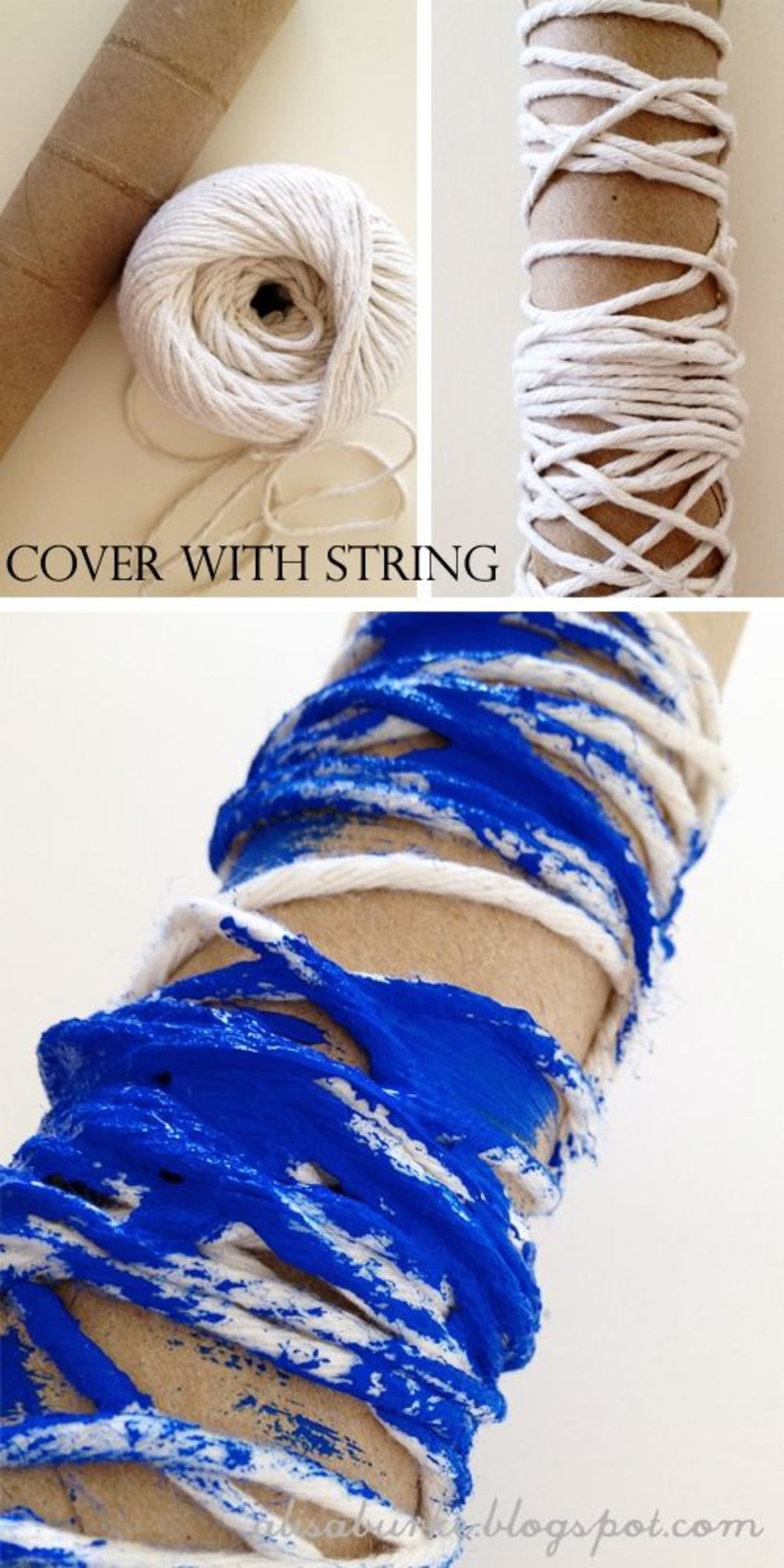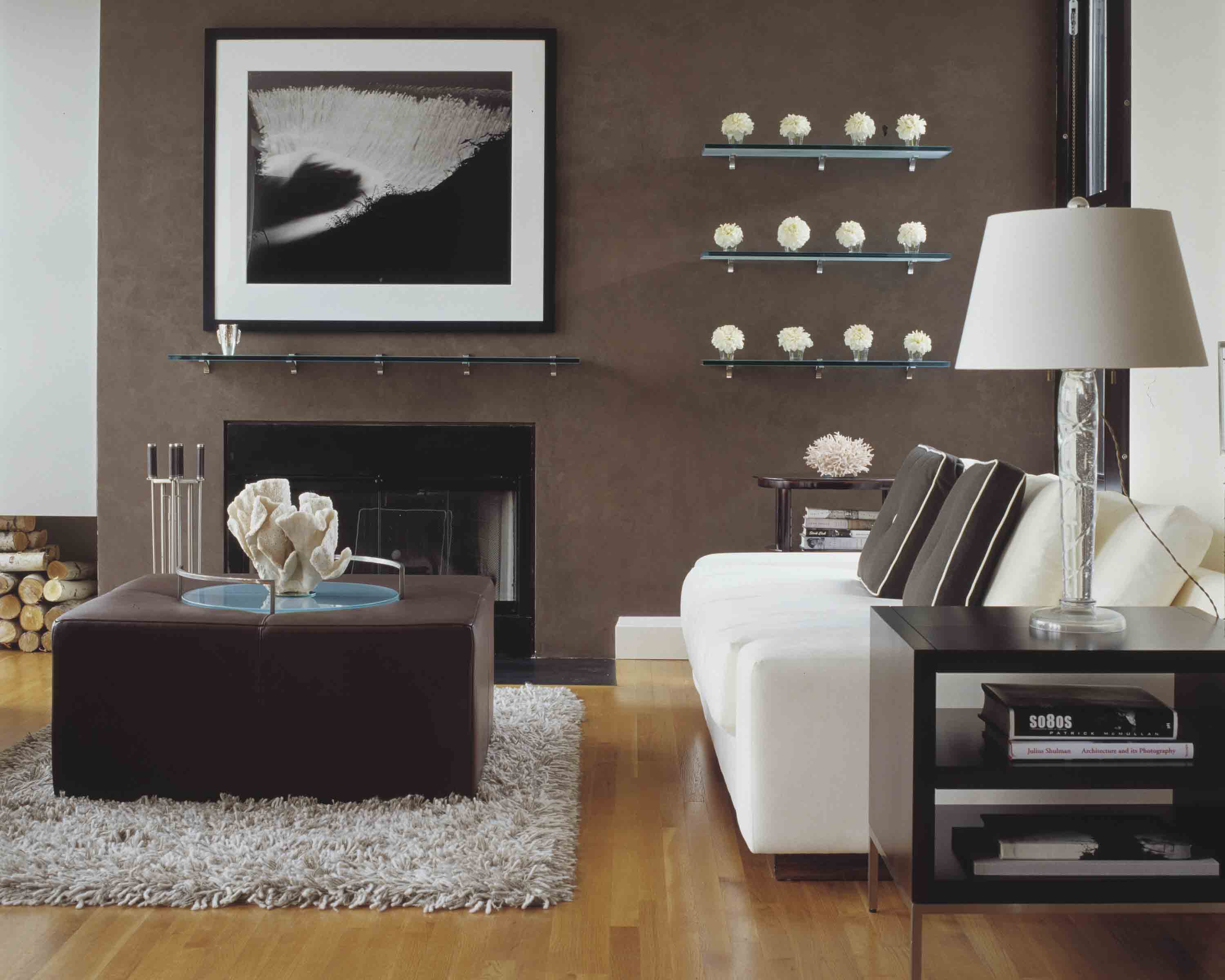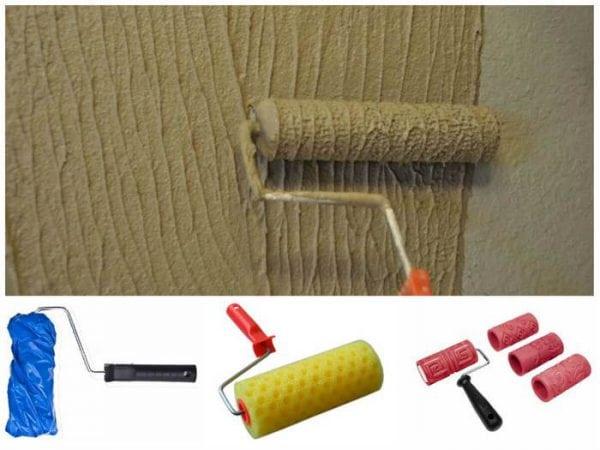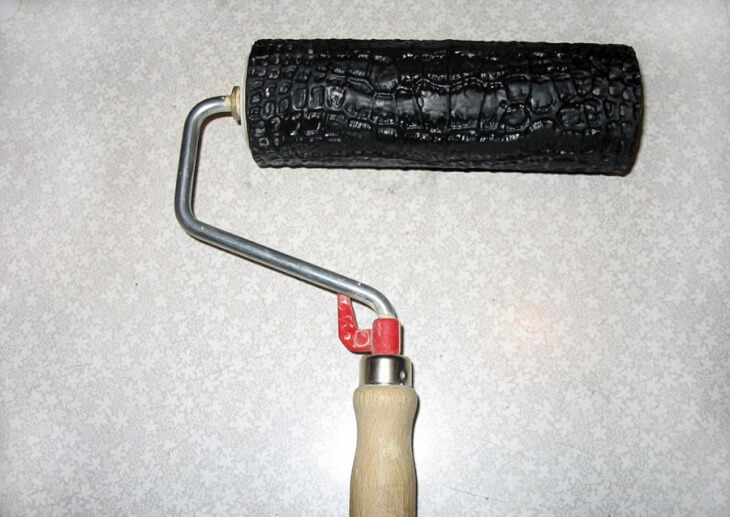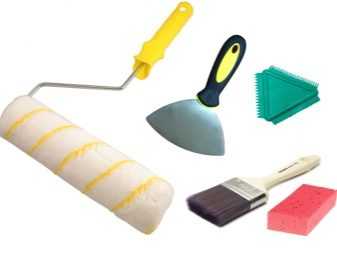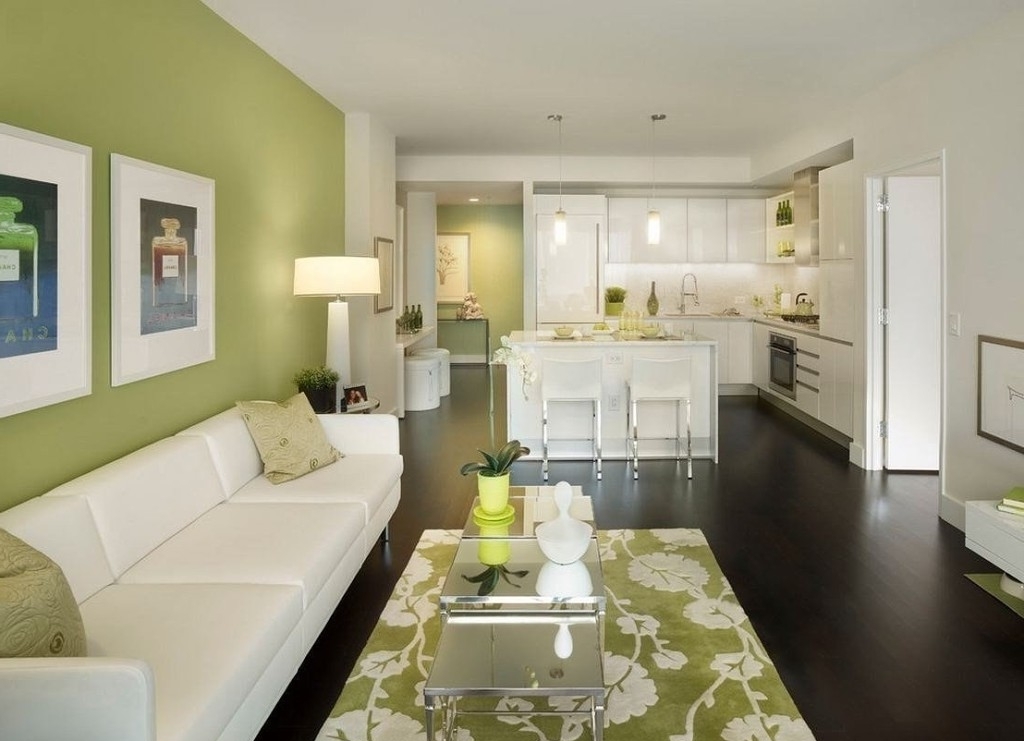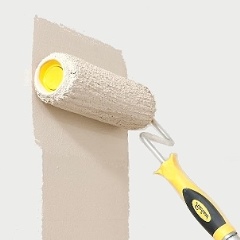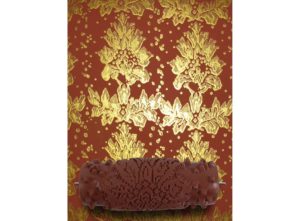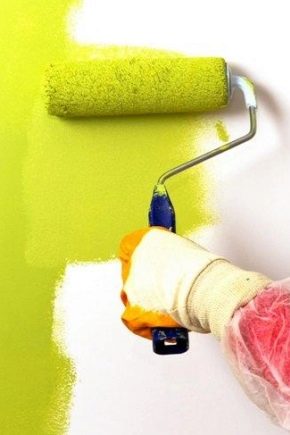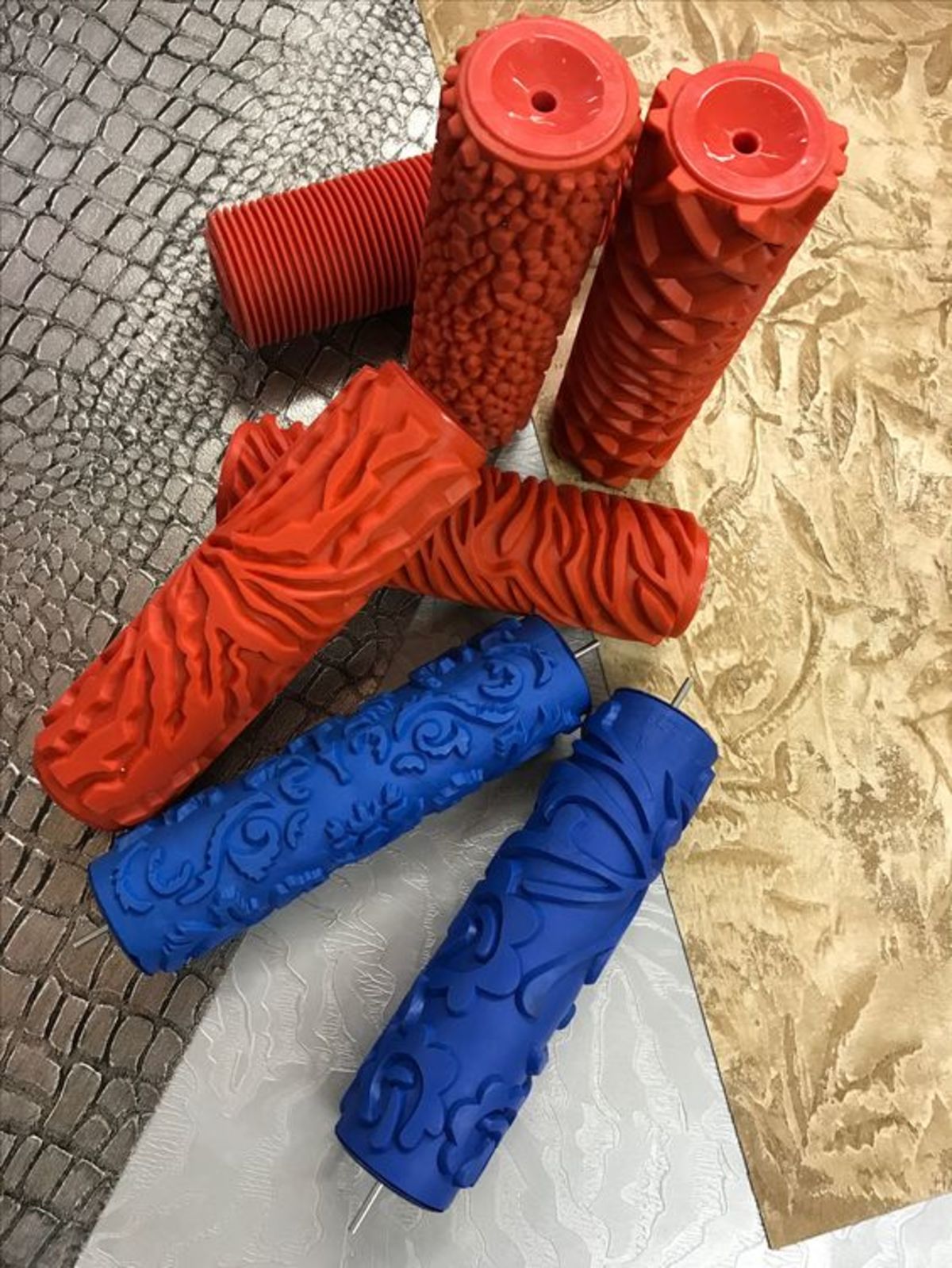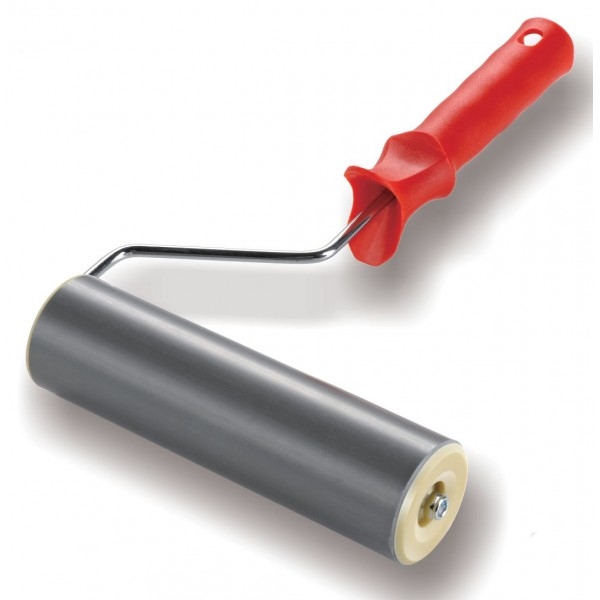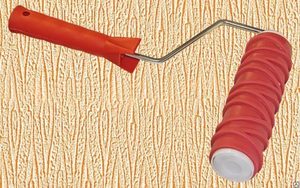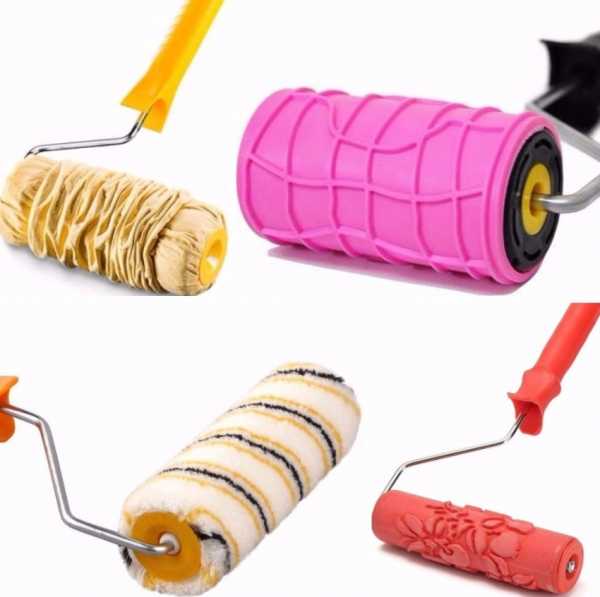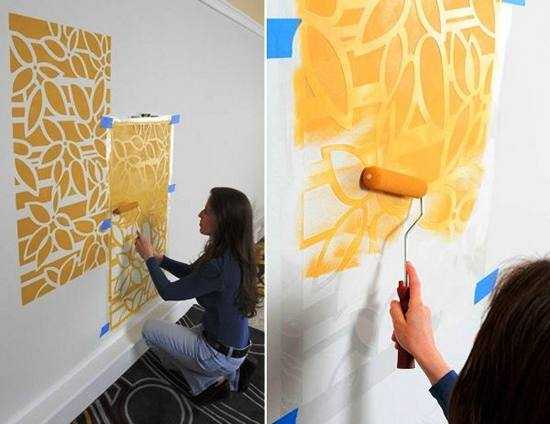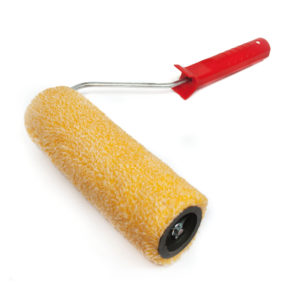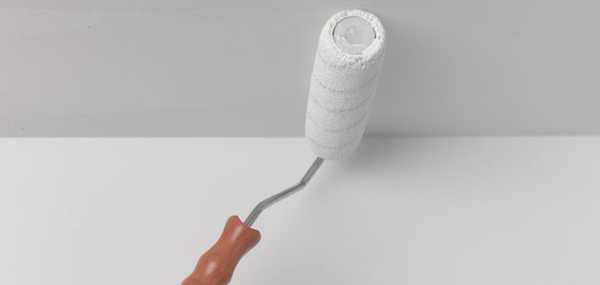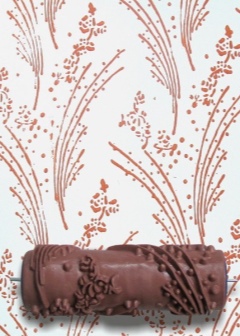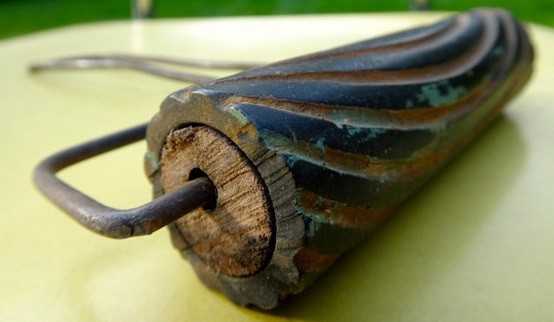How to do wall art using a stencil?
Prepare a stencil for painting walls, glue for it, a roller or a brush. Spray paint or acrylic paint will work.
Prepare the surface for painting. Clean it from dust, dirt, wash if necessary. Apply markings on the cleaned surface. If possible, use a level: this way there is less danger of skewing the drawing or applying it incorrectly. Mark with a pencil the points that are extreme for the stencil, so that then fix it on the surface evenly.
The stencil can be inked with a piece of foam.
Practice a little before getting started. To do this, you can use a piece of wallpaper or find an inconspicuous section of the wall. The preliminary work helps to practice a little in terms of the application technique and choose the desired color of the ornament. Experienced craftsmen try to make several versions of the ornament in different shades in order to see what best reflects the idea on the surface of the wall.
It is better to use special aerosol glue to fix the stencil on the wall. There will be no sloppy marks left from it after the stencil is removed. Neither wallpaper nor paint will come off the wall. An even layer of glue is sprayed onto the manufactured stencil, after which it is pressed to the surface. For safety net, you can additionally use tape. It must be borne in mind that glue will not save from getting paint under the stencil.
When painting through a stencil, remember that high-quality wall painting does not tolerate fuss. To do this, it is better to choose an acrylic-based paint: it dries faster, it is acceptable for any surface. You can apply paint with a sponge, brush or roller. When working, take in the colorant little by little (this eliminates the risk of smudges).
When working with small stencils, a brush is recommended to apply paint.
When working with the brush, keep it perpendicular to the wall surface. Apply the paint by printing, so that neither the lint nor the coloring matter gets over the edge of the product. When painting with a sponge, the first prints must be made on a separate sheet of wallpaper. This will remove excess paint. When using a roller, care must be taken to distribute the paint as evenly as possible. It is especially necessary to handle the corners, small details of the stencil with care. The roller is best used for products with a large pattern.
To paint with an aerosol paint mixture, try to hold the can at a distance of 30 cm from the wall. Sometimes the wall needs to be protected from paint smearing by the edges of the stencil.
The drawing is saturated with color in several stages. If you get not very clear boundaries, you need to draw them with a thin brush.
To create a three-dimensional pattern on the wall, acrylic putty will do. It must be applied with a spatula. This is done layer by layer until the desired thickness is obtained. To create a three-dimensional pattern, this is 1-3 mm. The putty sets in 2-3 minutes after application, but does not fully harden yet. At this time, the stencil must be carefully removed so that the ornament is not damaged. An uneven layer, after the putty dries, can be leveled using fine-grained sandpaper. The resulting pattern can be painted or toned.
After finishing the work, the stencil must be washed and dried.In most cases, it can be reused more than once.
When working with a stencil, sometimes mistakes are made, which can be omitted. For example, this is a misalignment of the product or smudges of a dye. To avoid this, you must first securely fix the stencil. Take quite a bit of paint, and make gentle movements when painting.
Decorative paints: types and positive properties
Decorative painting is carried out with special paints and varnishes with special properties that allow you to paint walls with unusual visual effects and patterns.
Consider the most common types of patterned finishes:
- With the effect of mother-of-pearl - allows you to paint walls with the effect of an iridescent canvas. When changing the angles of illumination, the patterns and shades of the surface change;
- With the effect of velor or velvet, the composition includes multi-colored solid particles, which allow for a velvet-like application;
- The mosaic effect is applied using a special device - a spray gun. Here, an unusual pattern is achieved thanks to the spreading of the smallest acrylic bubbles.
- Paints with various additives, which are crushed shells, sand, flakes.
In addition to the listed paints, one cannot but recall glazes and enamels, which make it possible to obtain an unusual ornament on the walls using various methods of application.
Decorative wall paints have a number of positive qualities:
- durability;
- antistatic;
- safety and environmental friendliness;
- ease of care;
- resistance to atmospheric and mechanical stress.
But it is also worth mentioning the disadvantages of decorative paints:
- high cost;
- the need for a perfectly flat wall.
Interesting to know! Sometimes decorative painting of walls with your own hands in order to save money is performed not with specialized materials, but with water-based paint and varnish compositions, which, when used correctly on the walls, allow you to get patterned surfaces
But here it is important to take into account some nuances: in no case should such a product be applied with rollers and sponges made of synthetic material, since small bubbles can form
How to choose the right paint
Structural paints are one of the most popular finishing materials. They are applied in different ways and varieties for certain premises are also needed different. Coloring mixtures for living rooms (bedroom, hall, nursery) are selected with the texture of silk, velvet, it is recommended to paint the ceilings in light colors, but it is better to make the most minimal relief. A volumetric water emulsion is best suited.

Wet rooms of the bathroom, toilet, combined bathroom, are decorated with waterproof compounds. In the kitchen, especially in the work area, the likelihood of contamination is high, it is recommended to use washable coverings. The outer parts of buildings of any type are often exposed to temperature extremes, precipitation, and sunlight. For facades, the most resistant to all sorts of influences brands of dyes are used - vinyl is optimal, and acrylic is undesirable, since it fades in the sun literally in one or two seasons.

Textured rollers for decorative plaster and wall painting
The textured roller for decorative plastering or painting the wall surface is a special type of tool that is represented by a wide variety. You can buy it ready-made or make it yourself, using an old roller and scrap materials as a basis.
A textured roller is a great way to decorate the surface without resorting to too complex and expensive technologies. And in order to make sure how unusual and beautiful the effect of using a textured roller for painting walls can be, just look at the photo examples presented on the Internet.

With the help of a textured roller, you can quickly give the decorative plaster the desired pattern
How to choose the right roller for painting the ceiling and walls: expert advice
A huge selection of different rollers can confuse almost anyone
So in order not to be mistaken in the choice, it is worth again paying attention to all important aspects and observing the following recommendations of specialists:
- before you buy a roller, check it right in the store. To do this, crumple the fur coat with effort and evaluate the deformation. If the fur coat is wrinkled too much, then it is better not to buy such a roller;
- when buying a roller with a long pile, the coat must be inspected first to make sure that the fibers do not fall out. Otherwise, you will have to face hairs on the surface of the painted wall or ceiling;

For high-quality painting of the surface, when buying a roller with a nap
it is necessary to pay attention to the quality of the fastening of the pile
if you are not sure which roller is suitable for which paint, it is best to give preference to the universal option, which is, for example, polyamide rollers;
if you have to paint the walls in an apartment, then a roller with a short handle will be enough
But if you pay attention to how it is correct paint the ceiling with a roller, then you can see that there are special telescopic handles for this;
The clasp of the roller should not be too soft, as this can cause deformation, which in turn will affect the quality of the surface painting and the durability of the tool. Following these simple, but extremely important recommendations, you can purchase a high-quality roller that will allow you make a high-quality surface coating, while spending a minimum amount of time and effort
By following these simple but extremely important guidelines, you can purchase a quality roller that will allow you to achieve a quality surface finish with the minimum amount of time and effort.

Before painting the ceiling, the surface must first be primed
Helpful advice! If you need to work with several colors at once, it is not at all necessary to purchase several rollers. It is much easier to buy additional fur coats that can be changed on the roller as needed. In addition, this way you can significantly save money.
DIY roller making methods
There are several simple methods for making a textured roller for working on decorative plaster. To make a tool that imitates brickwork, you will need:
- rubber-based roller;
- sharp knife.
The roller should be wide enough. In order for the imitation to resemble the original as much as possible, the surface of the roller must be divided into 3 equal parts by two channels. Then, on each of the parts, transverse grooves are cut in a checkerboard pattern, resembling seams between bricks. The result of the work is rectangles separated from each other, which, when printed, will become bricks.
To obtain impressions that simulate marble, you can use another simple method. This requires the use of compressed tissue or leather. The material is crumpled and, in a crumpled state, is glued to the roller using universal glue. When working with such a tool, the movements should be slow and uniform. You should try not to take your hand off the wall for as long as possible.
Alternatively, you can use crumpled foil or a plastic bag, which is secured to the base of the roller in such a way as to obtain the maximum number of folds. The folds are fixed with tape and glue.
Unusual effects on plaster are created with tools wrapped in thick rope or rubber bands. In this case, the turns should be done in no particular order.If you wind the rope in even rows, the plaster will look like a natural canvas made of bamboo or reed. Uneven winding will create a wood imitation.
But this is not all that can be achieved by making a structural roller yourself. For example, by gluing a piece of textured fabric (burlap, canvas, etc.) to the work surface, you can get walls with imitation of textiles.
An interesting solution is the use of various cereals to create a textured tool: peas, rice or buckwheat. The surface of the roller is coated with glue and sprinkled with any of the selected cereals. To create certain patterns, you can paste over only areas in the form of flowers, twigs, leaves, etc.
How to work with a structural roller - all the secrets of a successful interior
Do not use rollers that are too large for work, since with their help it is very difficult to achieve an even distribution of paint over the surface. To avoid drips, the tool should be carefully rolled out in a special bath before painting. If you don't have one, you can use plywood or corrugated iron sheet. As a result, the required amount of paint will remain on the tool.
Never use the same tool for different types of dyes. As a last resort, you can make a textured roller with your own hands. As you know, it is almost impossible to work with such a tool in hard-to-reach places. Therefore, all corners, surfaces at platbands and baseboards must be passed with a paint brush.
Usually the paint is applied to the walls from top to bottom, and on the ceilings in the direction of the incident light. This will make it easier for you to notice small errors. Structural roller painting is carried out in the same way. The paint is applied in stripes or stripes, preferably with an overlap of several centimeters.
At the very beginning, the paint is applied in the thickest possible layer, after which it is rolled out with a roller. With each pass, the pressure on it is gradually increased. In this work, the main thing is to blend the paint as carefully as possible. If you find gaps, then the painting should be repeated in this place.
Sometimes experienced painters first apply the paint with a brush, after which it is carefully rolled out with a roller. In order to understand how to work with a structured roller, you can first practice on a piece of cardboard. And only after that start painting the walls. At the end of the work, the tool should be thoroughly washed or placed in a container, filled with paint, and then tightly wrapped in a plastic bag.
Is it possible to create a decorative effect using regular wall paint or why pay more
You can use a few simple tricks to get an unusual effect without special paints. An example is the application of one layer of water-based paint, to which a different color will be applied with a sponge. As a result, the effect of "crumpled paper" is obtained.
To obtain the effect of marble, the surface is painted sequentially in different colors, then it is processed with a stiff brush, it is worth applying a special wax. Also, fabrics, yarn and other improvised means are used for various options.
 You can apply a few simple tricks to get an unusual effect without special paints.
You can apply a few simple tricks to get an unusual effect without special paints.
How to repaint with your own hands?
Over time, the paint crumbles and burns. If the surface is flat, then removing the old layer is not a problem. It is much more difficult to repaint the embossed surface. But in both cases, the plaster needs to be processed for painting:
- Remove dust and dirt from old plaster. The non-moisture-resistant paint coating is removed with a spatula, a steam generator or by wetting it with water.
- Then apply a primer. It is advisable to take white or a composition with a pigment in order to avoid non-staining.
- Now we paint the walls in any convenient way.
The primer is necessary for strong adhesion of the new paint to the old surface.

Decorative plaster kitchen interior
Materials for making decorative rollers
Modern tools differ among themselves by the type of material. Today at The following types of decorative rollers are presented on the market:
- Rubber cover. At the base of the tool, there are protrusions with depressions of various shapes and sizes, due to which a pattern or texture is created on the surface. For example, imitation of a relief plane with patterns, brickwork, etc. But such a tool is suitable exclusively for experienced craftsmen, because it requires certain skills in the work.
- Wooden base. Such texture tools are best used for painting walls in children's rooms, since wood is considered an environmentally friendly material, so no harmful substances are emitted when using it. It can also be used to create original convex patterns and ornaments on the painted surface. But there is one significant drawback - a wooden roller, unlike a rubber analogue, can swell during operation. To avoid this, the instrument must be thoroughly cleaned and dried after each use.
- Leather base. With it, you can give the surface a marbled effect. An excellent choice would be a tool with a genuine leather base. When it comes to applying Venetian plaster, it will become an irreplaceable assistant.
- Plastic base. Not the best option. The thing is that during prolonged use, the plastic base can crack, thereby spoiling the pattern on the surface of the walls. If you nevertheless decide to use it, you must remember that you can apply textured plaster only on a perfectly smooth surface.
- Pile base. The roller cover is made of synthetic or natural fur with fibers of various lengths. When choosing this type of tool, it must be remembered that the longer the fibers, the rougher the surface will be and the more patterned the blotches on the wall will be. It is recommended to give preference to exclusively high-quality instruments with reliable attachment of fibers.
There are also analogues with a base made of foam rubber, foam and fabric. Foam variants are used for priming the first layer for subsequent decorative application. They are also great for creating bubbles on the surface. Fabric analogs, for the manufacture of which plush soft fabric is used, form embossed traces (patterns) on the wall. Devices with a foam base resemble a rubber counterpart. But it must be remembered that the foam is short-lived.
What is decorative wall paint and methods of applying it
Decorative paint is a paint that creates some visual effects. This group does not include conventional opaque monochromatic compositions. Only those that differ from them in some way. These formulations reproduce different natural materials. Silk, velvet, plush, sand, natural stone, leather, velor, etc. They are sometimes called decor paints, since it is not just a background, but an independent decorative element.

Decorative wall paint with a silk effect is a decorative element in itself
Most often, decorative paint is applied as usual - with a brush, roller or spray gun. If the texture itself is "rich", this is quite enough. The walls already look unusual. In this case, they are just a background. Beautiful, unusual stylish, but background.
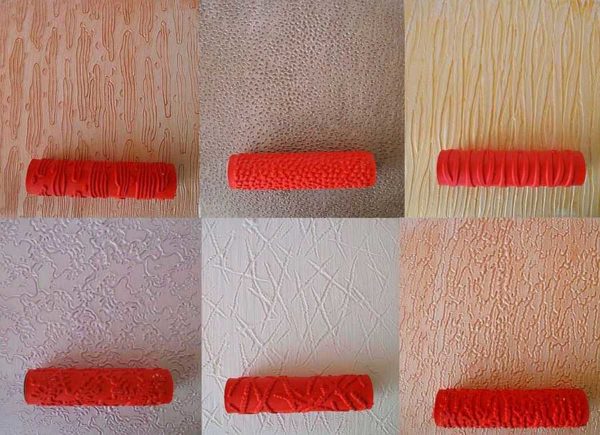
Embossed rollers - easy and simple to get an unusual wall decor
To obtain more interesting surfaces, special application techniques are used. The simplest are embossed rollers. They break the monotony of paint by adding relief. There are other tricks as well.
- The applied paint is rubbed off. So from the "silk" paint you can get wet silk or plush.
- Partially wash off the paint with crumpled paper, a sponge, a piece of fur, plastic or metal notched spatulas, metal wool, etc.
- Pass from above with a semi-dry roller or a hard brush with a darker or lighter paint.
- Apply a plastic wrap to the painted piece, crumple it a little and remove it.

Some ways to get creative
In general, there are a lot of options. This process is completely creative and there are a lot of variations. And the result can be very different, even if you use the same paint.
How to choose?
A variety of decorative painting tools can complicate roller selection. To avoid mistakes when buying, we suggest using the tips of the masters who have been engaged in decorative and finishing work for more than one year.
What should be done:
Check the quality of the working part of the roller and its resistance to deformation. To do this, the fur coat must be crumpled noticeably, and then assess the condition. Severe dents on the fur coat are a reason to refuse to purchase such a roller.
- When choosing a long-haired roller, it is necessary to visually inspect the fur coat for loose fibers, which will necessarily stick to the painted wall, which looks unattractive.
- Make sure of the reliability of the clasp - the bracket that acts as the basis of the tool. Soft clasps deform faster, which not only shortens the service life of the roller, but also negatively affects the quality of the finish.
What to look for when buying:
Structural rubber roller - in this case it is important to evaluate the quality of the rubber and the cylinder performance. A good tool has a resilient coating and an easily rolling, vibration-free roller
The optimal solution for creating the perfect pattern is a tool that has a lubricating cylinder and a hopper, which allows you to stretch the entire pattern without the need to interrupt to saturate the coat with paint;
A textured tool with a foam rubber coat - here you need to make sure that the selected spongy coating has pores of the required diameter to obtain a decorative effect of bursting bubbles or lunar craters;
- Leather embossed roller - since it is used mainly for working with Venetian plaster, try to consider only those products for which the leather coating is natural. It is impossible to make prints on a plastered base with devices made of synthetic analogs - once, and they are able to dissolve - two;
- Roller made of pile - here you need to be guided by the length of the villi, ranging from 0.2 cm to 2.5 cm. The effect of strong "furry" of the wall is created with a long-pile roller;
- Patterned tool - the drawing of a figured stamp is of great importance: the most beautiful ornaments are obtained through a combination of thin lines and bridges present in the pattern.
Cooking textured paint
Before using textured paint, you should carefully study its instructions, which indicate the drying time, preparation procedure and application tips. Most of these mixtures are sold in plastic buckets.
Its consistency is distinguished by an impressive density, which is why a small amount of water is added to it before application, after which mixing is carried out using a drill with a mixer nozzle installed. In this case, the main thing is not to pour more liquid than necessary, because as a result, the product may no longer fully hold on to the base due to its excessive rarity, for example, on the ceiling. When diluting, experts do not recommend adding more than 1/10 of water relative to the total volume of the mixture. In practice, on average, 4% is sufficient for optimal mixing.
If, by design, the surface is to be painted in a non-white color, then a suitable pigment is added to the mixture.
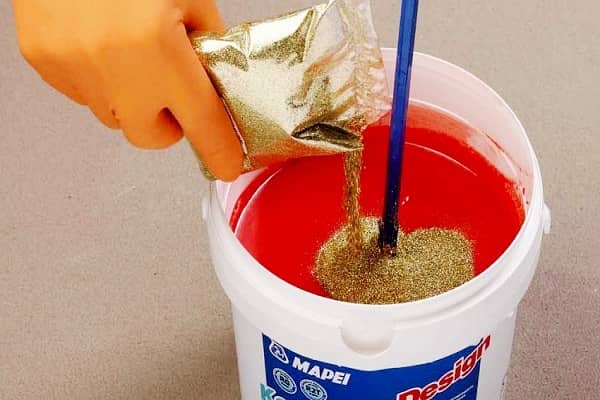
After each portion, you need to pause, stirring and checking the resulting shade for compliance. If the color is still too light, you can continue adding pigment. To check the degree of color intensity, a smear of paint is applied to an unnecessary piece of wallpaper or other material, which can be dried with a hair dryer for quick drying. The best pigmentation quality is achieved by adding a color scheme from the same manufacturer that produces the paint used.
Painting process
To decorate the walls with a curly coating, you will have to use at least two shades of decorative paint: the base one and the one that is applied directly to the ornament itself.
You can make the main painting in a darker tone, and put a pattern of a light color on top, or vice versa. The main thing is to observe the relative contrast so that the shades do not merge. Coloring is carried out as follows:
- The surface is carefully prepared, that is, cleaned and leveled, if necessary (in any case, it must be perfectly clean and even). To solve the last problem, ordinary and finishing putties, as well as sandpaper, are used.
- The walls are treated with a primer to create strong adhesion (adhesion of the coloring material to the surface), as well as in order to more economically use the decorative coating.
- A base coat of paint is applied to a completely dry base. At the beginning of this stage, you will have to work with a brush to paint over joints, corners and other hard-to-reach places, bypass sockets and switches. Do-it-yourself decorative plaster of walls from ordinary putty video? The remaining area is treated with a roller, moving from top to bottom, and alternating vertical and horizontal movements in order to thoroughly paint over the entire surface.
- When the first layer is completely dry, they begin the most interesting thing - working with a curly nozzle. A steady hand is important here, because you need to act carefully and accurately. With some practice, you can be sure of success. The roller is rolled from top to bottom, meticulously combining each new strip with the previous one (there should be no overlaps).
Sometimes the resulting dried surface is also treated with a transparent varnish to give the coating strength and extend its service life.
Textured rollers - we deal with species diversity
How does this tool work and where is it used? The surface of the structural (relief) rollers is made in the form of various patterns. Their very name suggests that they are intended for the creation of decorative coatings. To create the most uniform pattern on the surface, the structured roller must be rolled in different directions, while trying to maintain uniform pressure.
The work with a structural roller consists in the formation of a volumetric pattern on the decorative plaster. There are two types of tools: soft - made of foam rubber or fabrics, and hard - made of rubber. A textured roller is used if it is necessary to level the surface covered with liquid wallpaper.
Most often, rollers with a textured surface are used to create a uniform relief pattern on wet plaster, its depth does not exceed 5 mm. They are made from wood, linoleum or rubber. To achieve a textured effect, use a curly roller. You can even make it yourself. To do this, the surface of the sleeve should be tied in several places with a thread.
If you have a foam roller, use a knife to cut the simplest pattern on its surface. Structural rubber roller is usually used indoors for applying dispersion paints. With their help, a coating with a pronounced relief structure is formed.
Stone effect paint
Another decorative paint, very similar in appearance to decorative plaster. This is a stone effect paint. It is safe as it is made on the basis of an acrylic emulsion.Decorative elements have been added to it, which create the required look and relief. For example, Rust Oleum Multispec Stone Accents, Siberia Rock`n`Wall. This paint has 10 shades - from very light to quite bright. It can even be used in kitchens on work aprons.

Both natural stone effect paints look about the same
A very good specimen in terms of operational properties. Has very good adhesion. Very smooth surfaces - such as plastic - require a primer. The rest can be painted immediately. It is applied from a spray gun or using a special roller (of the same company). The appearance depends on the method of application. After the roller, a surface with pronounced flakes of "stone" remains. After the spray gun, the surface is smoother.
In operation, this paint imitating stone is convenient and durable. It can even be washed with a brush. For Rust Oleum, additional protection (in the form of varnish) is not required, and it is better to varnish Siberia in areas of heavy pollution. The paint is repairable. If somewhere you get a bald spot or a chip, you need to moisten a piece of sponge with water, squeeze it out and dip it in paint, apply to the right place and wait until it dries.
There are also paint cans for a stone. But you are unlikely to use them for painting walls. Is that for a panel, some kind of decoration. It turns out too expensive.

This is how the stone paint "Alatyr stone" looks like
Another type of surface is provided by paint with the effect of burnt stone Alatyr-stone. It is also called "liquid granite". It is applied by spraying through a spray gun. There are solid and multi-color options. Less shine than described above. Positioned as crack and UV resistant. After drying, it must be varnished.
Paint rollers
General information
Paint rollers appeared in the middle of the last century, and since then their popularity has grown.
It's related:
- with a simple design;
- low cost;
- excellent quality coatings applied with this tool.
The roller consists of a frame on which a rotating cylinder (roller) is placed, covered with an absorbent material. The frame has the shape of the number 7, with the short upper part serving as the axis of the cylinder, and the long one serving as a handle.
When the cylinder is rolled over the surface, the paint absorbed into its coating is printed on it, while it is not smeared, but shaded as evenly and evenly as possible.

It was this feature that determined the main advantages of this device, which guaranteed its further popularity:
- When working with a roller, even an inexperienced painter shows satisfactory results, which are not so easy to achieve with a brush;
- The consumption of material is noticeably reduced, which, with large volumes, results in a significant difference and affects the total cost of work;
- The speed of work increases, which is especially noticeable when painting large flat surfaces - walls, floors, ceilings and facades;
- The quality of the coating is always high, its uniformity is especially noticeable, reminiscent of working with a spray gun;
- A decorative paint roller allows you to create a relief, apply patterns, change the surface texture;
- When working with stencils, this device proved to be better than other tools, since in the process of work it presses the stencil and allows you to achieve the most even borders and outlines, the paint does not flow under the paper and does not fall into unwanted areas;
- The price of the tool allows us to consider it a consumable.
Varieties
There are a great many rollers. They differ in pile length, coating material, roller diameter and width, roller shape, axle shape, handle shape and length and purpose.
.
The amount of material that the roller can absorb when dipping into the tray depends on the length of the pile.In addition, long pile paints over irregularities and microcracks on the surface more thoroughly, therefore it is used for painting porous and embossed walls.
At the same time, such a pile is able to strand and lay down in strands, stick together and splatter, therefore, metal wire is often woven into such models, which allows you to maintain the shape of the coating during operation.
For the processing of smooth high-quality walls, a tool with a short and medium pile is used, as well as models made of foam rubber, microfiber, plush and other fabrics and materials.
The size of the roller determines the amount of paint that it is able to absorb, as well as the width and length of one full stroke. All this affects the speed of work, but do not forget that a large roller absorbs a lot of material and becomes noticeably heavier, which can quickly tire you and as a result, productivity will decrease. To get a feel for these roller-painting tricks, you should get some experience.
For painting ceilings and high walls, varieties with elongated or folding cylindrical handles are chosen, which allow you to reach the most remote areas without using stairs. Also, various devices are used to work with ceilings, for example, tanks for collecting excess paint, which do not allow material to drip onto the floor and stain the robe.
Tools with replaceable rollers are popular, because often in the process of work it is necessary to use different paints and apply them to dissimilar surfaces. In order not to spend money on several different tools, they buy one good roller and a set of replaceable cylinders with different coatings and purposes.
Natural mutton and goat fur, synthetic fur, foam rubber, microfiber, plush, various fabrics, rubber and other materials are used as an absorbent coating. The texture of the coating, the thickness of the layer, the types of paint used and the ability to work with a particular surface depend on the type of material.
There are special rollers with a narrow range of applications. Among these, there is often a corner paint roller or a pipe paint roller, which differ in roller shape and axle configuration. For working in corners, it is convenient to use a narrow wheel-shaped roller with a long and thick pile, and for painting pipes, a tool with a curved axis is used, on which two or more small rollers are mounted.
Separately, it is worth mentioning the embossed paint roller, which allows you to apply decorative elements, patterns, drawings and other decorations. This device has a rubber, leather or spongy surface with raised patterns. When rolled over, repeating prints remain on it.

